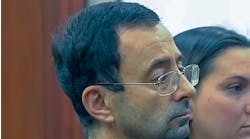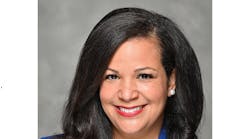While school districts increased their use of privatized services in some areas, more than half of the categories posted a drop in the use of outsourcing.
The future use of privatized services is expected to decline at both school districts and colleges compared to projections made in past years.
School districts and colleges are slowly reducing their use of outsourcing, preferring instead to keep the operation of non-educational services in-house. According to American School & University's 7th Privatization/Contract Services Survey, 23 percent of school districts do not contract out any services, compared with 21.7 percent in 1999 and 12.3 percent in 1997. At colleges and universities, 6 percent did not outsource any services, compared with 5.3 percent in 1999.
Those institutions that do outsource non-educational services are not as enamored with the practice as in years past. The percentage of school districts that privatize five or more services dropped to 9 percent from 15 percent two years ago (the last year this survey was conducted). The percentage of colleges and universities that outsource five or more services shrunk to 34 percent from 44 percent in 1999.
The survey was mailed to 1,000 school business officials and 1,000 college business officials in May. The result was a 29 percent response rate for schools and a 32 percent response rate for colleges (30 percent overall).
What's Being Outsourced
Table 1 (scroll to end of file) identifies the percentage of school districts that contract for various types of non-educational services. For the purposes of this survey, privatized non-educational services are those operations separate from the academic mission of the institution that are turned over to an outside company.
Among the most common privatized services at K-12 institutions are transportation (31.8%), vending (20.2%), HVAC maintenance (19.9%), computer servicing (18.5%) and office-equipment upkeep (18.2%).
While school districts increased their use of privatized services in some areas (administrative, computer servicing, laundry, printing, security, transportation and vending), more than half of the categories posted a drop in the use of outsourcing. The largest growth was reported in the outsourcing of laundry services, which more than quadrupled from two years ago to 7.9 percent of districts, and security, which grew by more than 50 percent to 12.7 percent of districts. Custodial, facility management, grounds maintenance and HVAC maintenance experienced the biggest shift away from being outsourced as more districts brought these services in-house.
Table 2 (scroll to end of file) details those services most often outsourced by colleges and universities. Among the most common include food service (74.6%), vending (63.2%), bookstore operations (45.7%), custodial work of academic buildings (26.3%) and laundry (20.6%).
Although six categories saw an increase in the percentage of colleges and universities outsourcing these services, twice the number of categories experienced a shift away from privatization and back to in-house operation. The largest percentage increases were posted in transportation, which more than doubled to 14.9 percent from two years ago, and computer servicing, which increased by 80 percent to 8.3 percent of higher-education institutions.
When it comes to the title at education institutions that is most often responsible for overseeing contract-services operations, little has changed from prior surveys. The two titles at both school districts and colleges/universities most often cited as being responsible for the majority of outsourced operations are the chief business official and director of facilities.
Looking Forward
The use of privatized services is expected to decline at both school districts and colleges compared with projections made in past years. About 25 percent of school districts report they will most likely outsource additional non-educational services in the near future (compared with 27 percent in 1999 and 42 percent in 1997). Roughly 36 percent of higher-education institutions expect their use of outsourcing to increase over the next few years (compared with slightly more than 37 percent in 1999 and 54 percent in 1997).
Larger school districts are more likely than smaller districts to predict their use of outsourcing will increase. The tendency to privatize non-educational services is highest among districts with enrollment greater than 5,000 and lowest in districts with fewer than 1,000. At the college level, institutions with more than 10,000 students are more likely to increase future use of outsourcing.
The reasons that schools and colleges privatize non-educational services are similar. Higher-education institutions most often choose outsourcing for better equipment (41.3%) and time-savings (34.9%). School districts always preferred to keep operations in-house, although these same two factors (better equipment and time-savings) received the highest percentage of respondents' preferences (32.5% and 25.7%, respectively) in relation to the benefits of outsourcing.
Public approval and accountability were listed by both school districts and colleges as the primary reasons why outsourcing of non-educational services was not practiced, and why operations remained or were brought back in-house.

